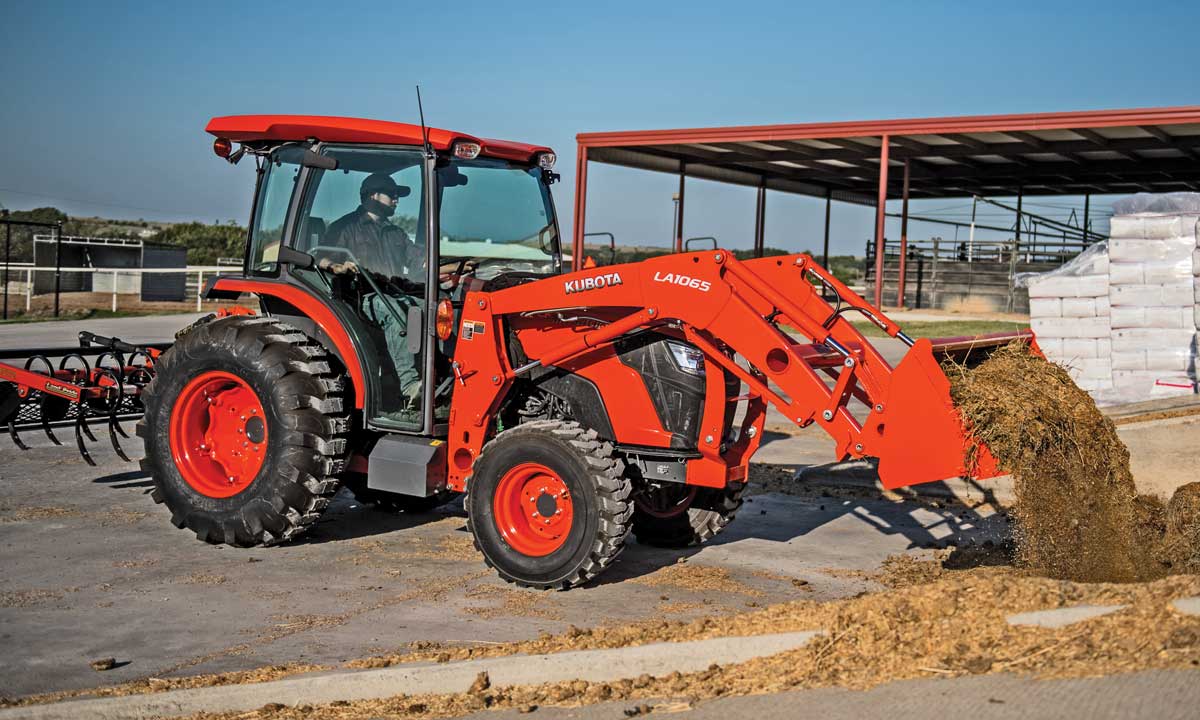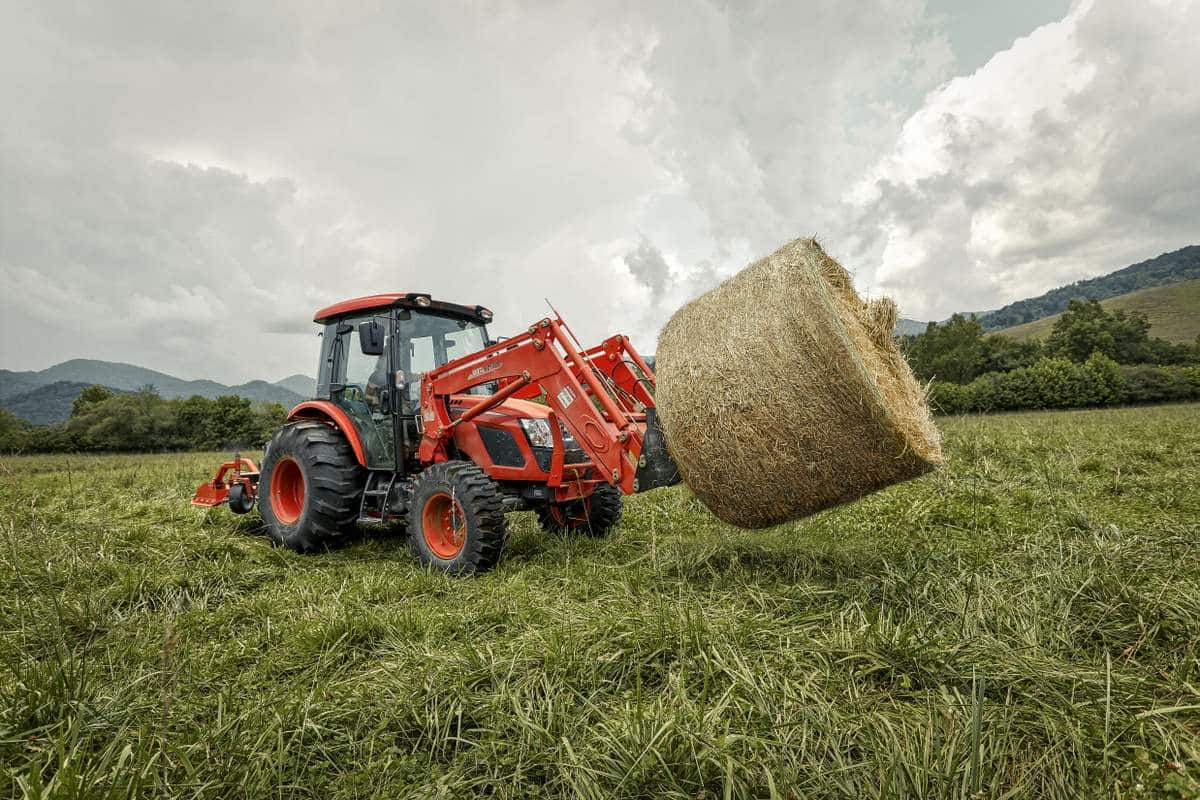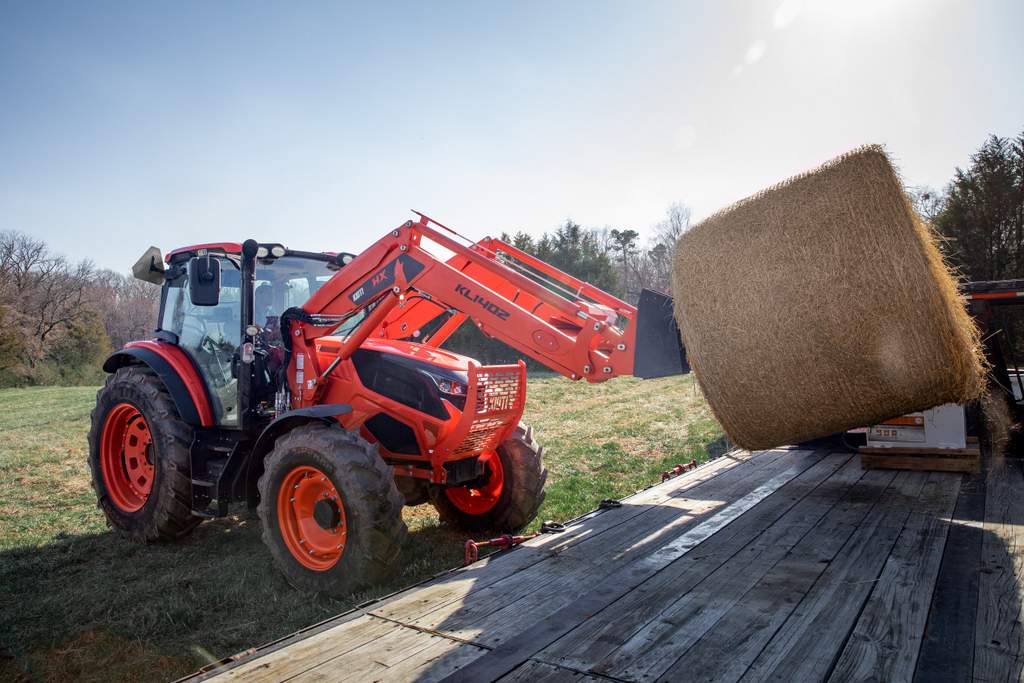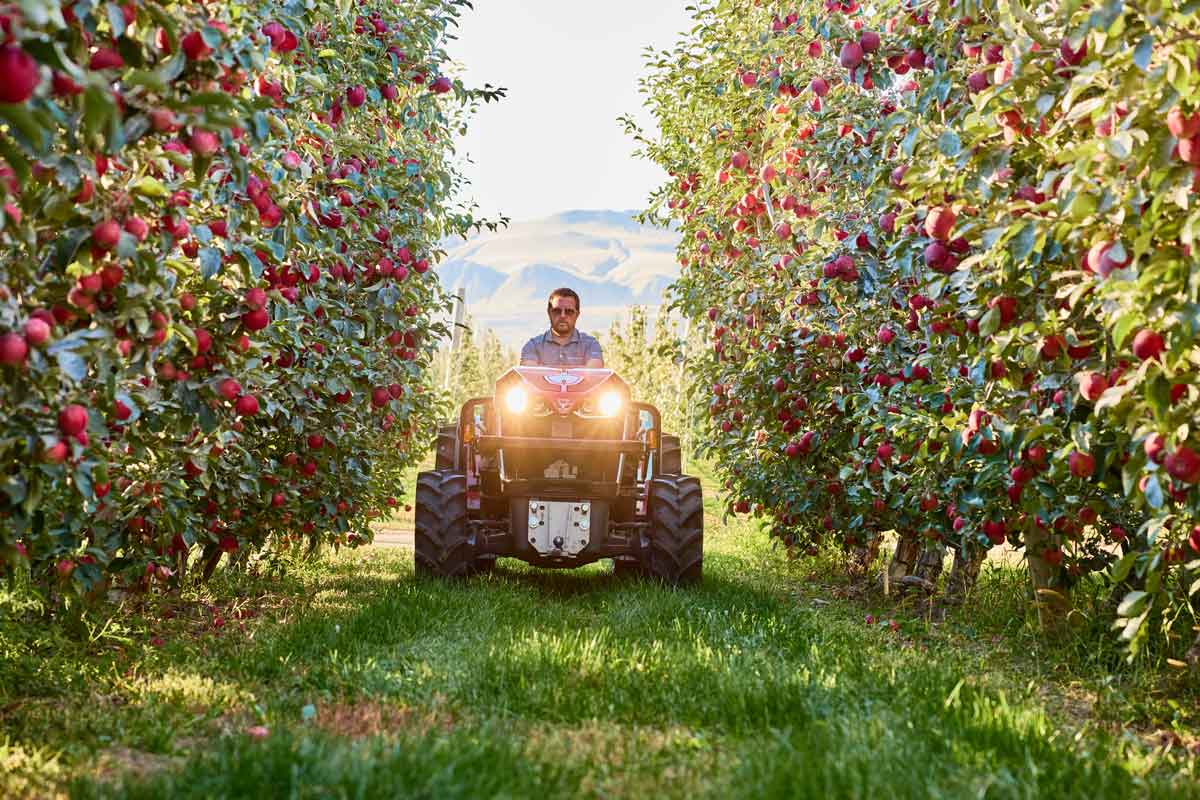Tractor Tips 101: Compact Utility Tractors Are Do-It-All Machines. Here’s How to Pick One

Even though its basic design is over a century old, the tried-and-true utility tractor continues to hold a place of honor with both commercial contractors and consumer homesteaders. That’s because these machines seem to be almost limitless in the jobs they can do — digging, lifting, loading, augering, mowing. You name it, and a compact tractor can probably handle it. Given those attributes, it only made sense that utility tractors would grow and expand to have the variety of options, sizes and features offered on bigger construction and farm equipment.
Luckily, matching the right machine to your business is a matter of talking to the right people and asking the right questions. Dealer input is important during your experience with a new tractor, stresses Matthew Carrigan, product marketing specialist for Kubota’s BX, B, L and MX Series tractors. “I highly recommend looking for dealer support, parts availability and trade resale value when considering a new tractor. Having that dealer support will give you a peace of mind when it comes to keeping this piece of machinery maintained and operating at its full potential.”
A key part of that effort, Carrigan says, is finding a dealer that has a premier parts department with parts readily available so you can get the tractor back to work quickly when a problem does arise. “Another good move is to go over warranty packages and service agreements with your local dealer,” Carrigan adds. “You also need to give some thought as to how long you plan to use the machine, which will help you determine if leasing or purchasing the tractor outright is the way to go.”
There is much to understand when picking and choosing a new compact tractor for 2022 operations and beyond. Attachments, attachment systems, transmissions, cab environments, maintenance protocols, automated operational features and connection to the cloud are changing the experience of owning and operating a utility tractor, which we’ll randomly categorize as units between 40 and 60 PTO hp and below.

Kubota offers multiple transmissions, including gear-driven, hydrostatic (HST) and HST Plus options.
For starters, understanding your power requirements for a new tractor is critical, says Mark Davey, go-to-market manager for John Deere, which is why he says the OEM offers more than 20 different compact utility tractor models. We’ll note there are both engine horsepower and PTO horsepower specs on a compact tractor. “Our models range from 23 to 66 [engine] hp and increase in weight and frame size as you move up through the line,” he explains. “If you need a very compact, lightweight option to haul on a small trailer, then our 1 or 2 Series models might be the best options. If you need more horsepower to do bigger jobs or a larger backhoe to dig deeper, then we will typically recommend a larger frame tractor from our 3 or 4 Series lineups.”
What about a cab, asks Joel Hicks, product development manager at Kioti Tractor? “Whether you’re clearing snow in sub-zero temperatures or landscaping in the sweltering heat, factory-installed cabs provide trade professionals with an opportunity to get the job done comfortably with heating and air conditioning,” he says. “The 24.5-hp Kioti CX2510 CH model, for instance, features a luxurious climate-controlled cab that sets it apart from other models in the small utility tractor market. Also, if you find yourself working primarily in the cold, field option cabs have heating systems to keep you warm while working.”
And if you didn’t spec a cab, but now wish you had, that’s not a problem, Hicks adds. “Kioti offers field option cabs for many of our models,” he notes, “including an all-new field option cab to be released this year for the CS20 Series tractors.”
Transmissions, Hydraulics and Attachments
Once you’ve got your basic machine size, brand and engine/PTO power configuration nailed down, it’s time to get serious about technology and implements. Transmission choices alone are varied and complex. A gear-driven transmission is designed to lock a tractor into one speed and is typically better suited for sloping and rough terrain. It’s an affordable option that allows for maximum tractor PTO performance, and it comes in four different gear-driven variants: sliding gear; collar shift; synchro; and power shift. Not to be confused with power shift, “power shuttle transmissions” combine hydraulic clutch packs with electronic controls to offer a clutch-less option to engage the transmission for repetitive forward and reverse maneuvers. This option offers the strength, power and reliability of a mechanical transmission without all the manual input involving hands, feet and legs. Hydrostatic transmissions use hydraulic fluid to power drive gears and axles, and this type of transmission is the most popular among compact tractors particularly thanks to its smooth ride and ease of use.
Kubota offers multiple different transmission options, including gear-driven, hydrostatic (HST) and HST Plus options, Carrigan says. “You can have the confidence to finish the big jobs easily with the mechanical Kubota Synchro-Shuttle transmission featuring inline forward and reverse shifting for quick directional changes.”
Tractor Trio: Three Popular Machine Options on the Market Today

John Deere Series 1 Compact Tractors
They may be small, but John Deere says its Series 1 compact tractor lineup can handle a variety of grading, leveling and finishing jobs on landscaping sites and other projects. Deere suggests using a box blade to level and finish a gravel driveway or path and a loader to move mulch, gravel, sand or soil. Another popular option is to pair its D120 loader with the 1023E tractor and a small box blade for maximum jobsite efficiency. Deere also offers a premium solution package which features a 1025R tractor packaged with the easy-to-attach/detach 120R Quik-Park Loader and a commercial quality box blade.

Kubota MX Series Compact Tractors
Kubota says its new MX Series is not only affordable but also provides year-round operator comfort with the new cab or ROPS models. Versatility is unmatched, the OE adds, noting that the tractors are available in either two-wheel- or four-wheel-drive models, with either gear or HST transmission variations. Contractors can also choose between 55.5 to 63.4 hp, which Kubota says gives these tractors the power to tackle just about any job that comes their way. The MX Series is designed for both residential and commercial needs, including land maintenance, feeding livestock, landscaping and municipal applications.

Kioti DK10 Series Compact Tractors
Kioti’s DK10 Series offers fully featured compact tractors with engine options ranging from 45 to 55 hp, delivering impressive power and smooth handling. A foldable ROPS allows for working around trees or entering enclosed areas, assisted by conveniently positioned controls and power steering. Other operator station features include a tilt steering wheel, adjustable seat and a flat deck with wide step-through area and generous grab handles for safety. The DK10 Series is powered by a dependable, liquid-cooled, fuel efficient, three-cylinder Daedong diesel engine. Rear differential lock, push-button hydraulic independent PTO and sturdy PTOs deliver serious power to a wide range of implements and attachments.
This transmission, Carrigan says, offers eight forward and eight reverse speeds, enabling you to select the right speed for better productivity. “The Kubota HST transmission provides infinite speed control with the HST pedal that can be operated simply by pressing down,” he adds. “The more the pedal is pressed, the faster the wheels go. An inline shifting pattern enables easy range shifting between low, medium and high. Lastly, any task can be tackled with ease and efficiency with Kubota’s HST Plus Transmission. With extraordinary precision, HST Plus’s automated control of both the HST pump and drive motor gives you optimal performance, regardless of the task, working conditions or operator expertise.”
The most popular transmission option for the Deere compact utility tractor lineup is the hydrostatic option, Davey says. “Ours comes with our easy-to-use Twin Touch pedals, which is very intuitive to learn. We also have PowrReverser transmission options on select models, which are ideal if you will be doing a significant amount of loader work. In our 3D Series lineup, we also offer a gear style transmission that provides great reliability and heavy towing performance in an affordable package.”
Today’s compact tractors are defined as small tractors equipped with (usually) a 540-rpm PTO and a three-point hitch designed for Category 1 implements. These implements can be mounted to the rear, belly or front of a compact tractor, and categories abound — augers, buckets, brooms, backhoes, pallet forks, mowers and ever onward — noting each attachment purchase will be its own research project. New implements are constantly being developed that add to the list of tasks a utility tractor can accomplish. “What this means for professionals is that versatile utility tractors purchased now will only become even more useful in the years ahead,” Hicks notes.
Attachments are great, Davey agrees, but being able to swap them out quickly to stay on the job is even better. “A great way to stay connected and keep track of your tractor’s operating capabilities is to use the Deere Smart Connector and our Tractor Plus App,” he says. “Additionally, using the i-Match hitch, customers can connect all the implements we have in our JD and Frontier lineups. Our drive-over AutoConnect Decks attach to a mid-mount mower quickly and easily for mowing jobs and quickly remove for loader work. If you add on our Load-N-Go attachment to your tractor, you can use your loader to easily move your mid-mount mower deck or raise it for routine cleaning and blade maintenance. Additionally, our Quik Park loaders make it easy to remove the loader when not in use, making your tractor nimbler in tight spaces.”
Technology is steadily increasing on smaller tractors from innovative attachment systems and phone apps to hydraulic implements and joystick controls. Tier 4 Final engines offer greener operations with high pressure common rail fuel injection systems, diesel oxidation catalysts and diesel particulate filters. Telematics technologies are creeping down into smaller tractor models, allowing owners to geofence, track maintenance intervals and ensure machine longevity. From LED lights to digital displays, utility tractors continue to become more advanced yet easy to use and maintain. And let’s not forget to mention the increase in service intervals and maintenance access for units. From easy-to-remove engine side panels that speed up access to the engine compartment to onboard self-diagnostic capabilities, service is being simplified.
A compact utility tractor is a wonderfully adaptable, flexible machine that can take your jobsite productivity to the next level. Getting the right machine is really a matter of carefully considering your requirements and talking with your local dealer to mix and match powertrain specs and attachments with them in mind. The key, as we mentioned in the lede, is finding that right partner.
“Reach out to your local dealership for knowledge on how to pair up tractors and attachments and everything else,” Carrigan advises. “Ask them about your different transmission options and which specifications can increase productivity and performance.”
Jack Roberts is a freelance writer for Compact Equipment.




